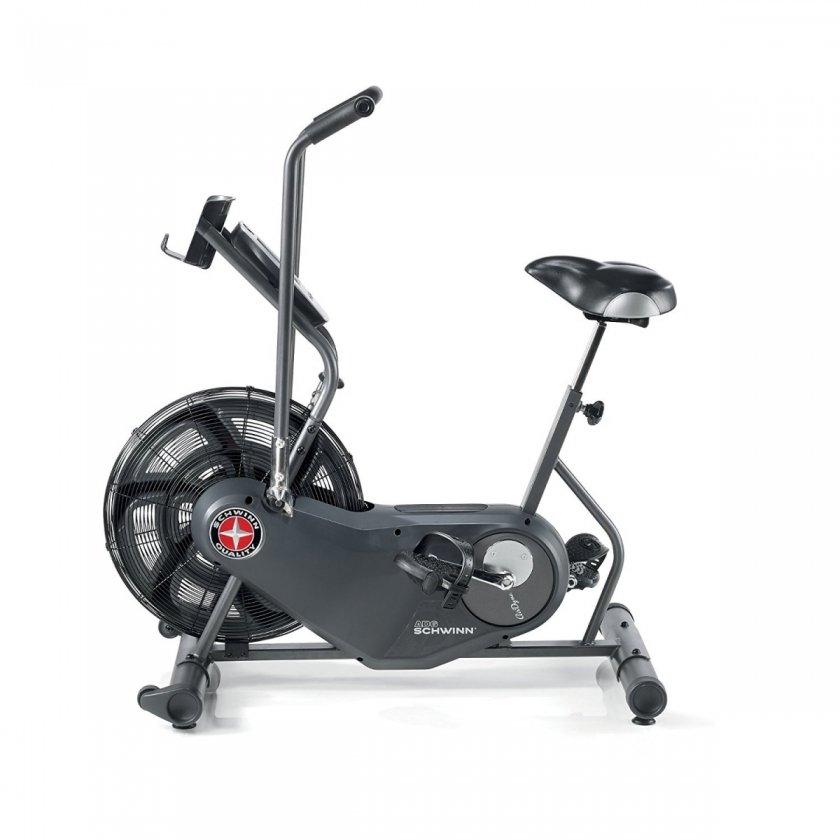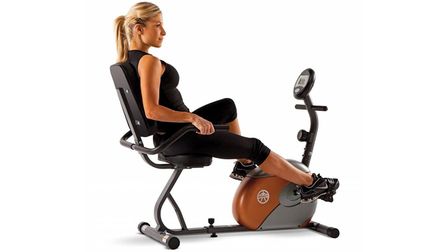The resistance is what makes your workout more or less challenging. Some people like more of it for a harder workout, while others prefer less so they can ride the bike longer without feeling fatigued.
What many people don’t realize is that the type of resistance in the bike is possibly even more important than the style of bike. But if you don’t know what type of bike is right for you, then you can learn more about that here.

When you are able to understand the difference among the three types of resistance in exercise bikes, then you will be able to make a better decision about the bike that you want to buy.
In general, an exercise bike is able to simulate the feeling of riding an actual bike because of the different types of resistance. Those three types include direct contact, magnetic and fan-based. Each of these has their own advantages and disadvantages, which we will explain to you in detail.
Direct Contact Bike

This is one of the simplest types of resistance that is easy to understand. With the brake applied directly to the flywheel, a certain amount of friction is created, which in turn creates the resistance. As a result, you can set the level (the amount of friction) that is created in order to get a customized workout. The more the brake pads come in contact with the flywheel, the harder your workout will be.
Magnetic Resistance Exercise Bike

Consider this to be the most innovative type on the market today. With magnetic resistance, there is no direct contact or friction created. Instead, it is created by electromagnetic induction. The levels are generally controlled with a digital button that can increase or decrease the level. This is the quieter and more consistent type of resistance when compared to all the others.
Fan/Air Resistance Exercise Bike

This is the original resistance type that is pretty easy to see and use. Instead of using a flywheel, the pedals are connected to a fan through a pulley system. As the pedals turn, the fan does too. The faster you pedal, the faster the blades of the fan will turn, which creates more resistance and a tougher workout.
Which One Is The Best For You?
Even though the different types of resistance all function in their own unique ways, you really can’t go wrong with any type.
The direct contact has a tendency to wear down after a while because of the continuous friction that is created. As a result, you may have to replace the pads or the entire flywheel occasionally. You also have to take into consideration the fact that direct contact resistance is a lot noisier than the other types. So if you plan on riding the bike while everyone else in your home is sleeping, it may not be a good idea.

Most people nowadays are turning to the magnetic resistance type for a few reasons. They require very little maintenance, and the parts won’t wear out since they don’t have direct contact or friction. The ride is going to be much smoother and quieter, so it won’t be a problem at all to ride the bike indoors at any time of the day or night. You can even watch and listen to the TV at normal volume in most cases!
Fan-based resistance bikes are the most old school since they don’t have many innovative features. However, you can essentially customize your workout based on how hard you pedal. These are generally cheaper, so if you’re on a budget, then it might be your best option to get a fan-based resistance exercise bike since you can get just as good of a workout in.
Final words
Now that you are an expert when it comes to resistance types in exercise bikes. You can feel confident the next time you are comparing different models. Since that is what makes the exercise bike a workout machine, it’s one of the top things to consider.Other features might be nice to have, but you won’t be getting much of a workout. So go out and feel confident knowing that you understand clearly the different types of resistance and you can now make an informed decision on your exercise bike purchase.













